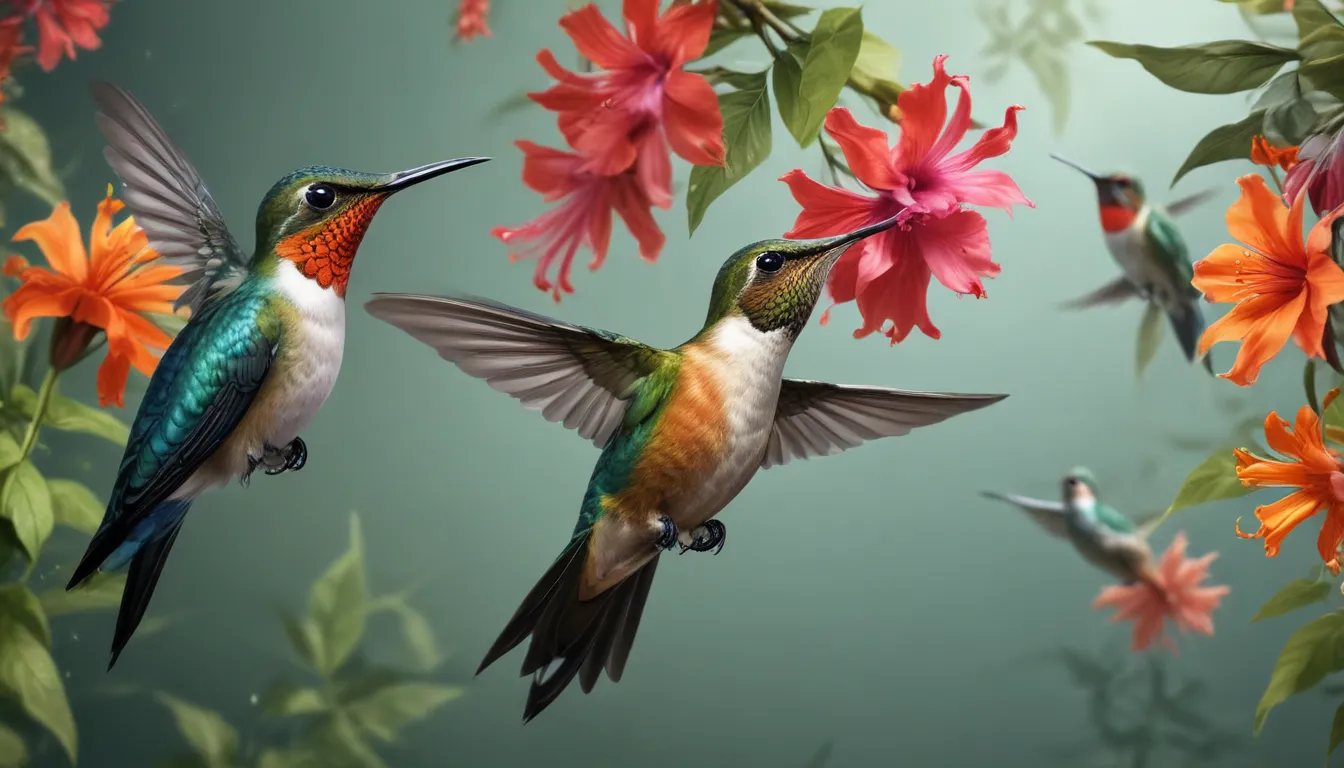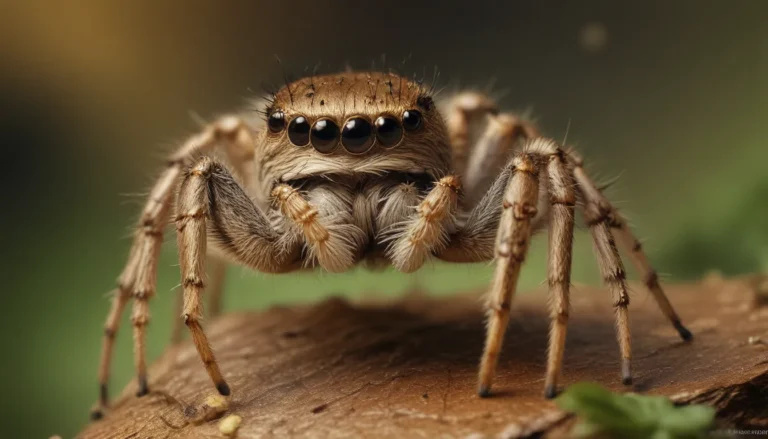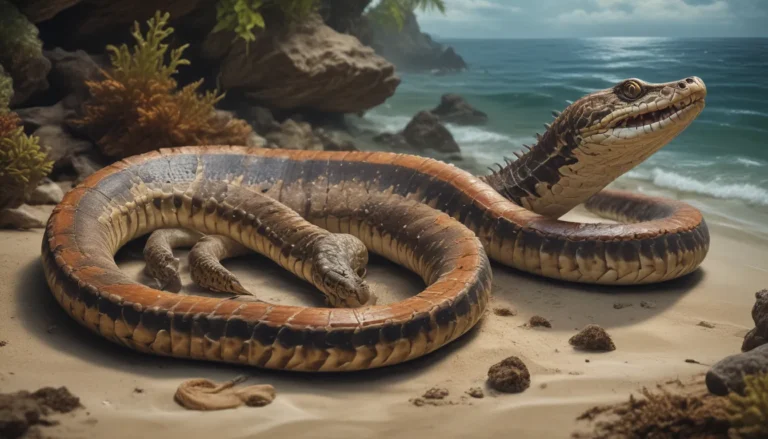The pictures we use in our articles might not show exactly what the words say. We choose these pictures to make you interested in reading more. The pictures work together with the words but don’t take their place. The words still tell you the important facts.
Hummingbirds are nature's miniature marvels, captivating us with their tiny size and astounding abilities. These pint-sized birds, with their vibrant plumage and incredible agility, have long been a favorite among bird enthusiasts and nature lovers. In this captivating exploration, we will uncover 15 intriguing facts about hummingbirds that will deepen your appreciation for these remarkable creatures. From their astonishing flight capabilities to their unique feeding habits, we will delve into the world of hummingbirds and reveal some lesser-known aspects of their lives.
Discovering the World of Hummingbirds
Hummingbirds are the smallest birds on the planet, yet they possess big personalities and extraordinary talents that set them apart from other avian species. With over 300 species found across the Americas, from Alaska to Chile, each hummingbird species boasts its own distinct characteristics and vibrant colors. These tiny birds have a unique flying ability that allows them to hover in mid-air, fly in all directions, and even reach speeds of up to 60 miles per hour. Their wings flap at an astonishing rate of up to 80 times per second, showcasing their unparalleled agility in the skies.
Unveiling the Mysteries of Hummingbirds
Despite their small size, hummingbirds have a high metabolism that requires them to consume half their body weight in nectar each day to sustain their energetic lifestyle. Surprisingly, these tiny birds have a longer lifespan than one might expect, living up to 5-9 years in the wild and even longer in captivity. With excellent vision that allows them to see a wide range of colors, including ultraviolet light, hummingbirds are adept at locating nectar-rich flowers for sustenance.
The Fascinating Behaviors of Hummingbirds
Hummingbirds exhibit a range of remarkable behaviors that highlight their unique adaptations for survival. They have a specialized feeding technique, inserting their long, thin beaks deep into flower blossoms to extract nectar using their intricately designed tongues. These birds are not only fast flyers, reaching speeds of up to 60 miles per hour, but also have a unique heartbeat with an average rate of around 1,200 beats per minute, making them one of the fastest-beating hearts in the avian world.
Insights into the World of Hummingbirds
Hummingbirds are known for their territorial nature, fiercely guarding their feeding and nesting territories through high-speed aerial battles. As expert pollinators, they play a vital role in the ecosystem by aiding in the pollination of various plant species as they move from flower to flower. During colder nights or food scarcity, hummingbirds can enter a torpor state, lowering their body temperature to conserve energy until conditions improve.
Celebrating the Wonders of Hummingbirds
In addition to their impressive flight capabilities and feeding habits, hummingbirds exhibit unique courtship rituals, diverse vocalizations, and a crucial role in plant pollination. Males engage in intricate aerial displays to attract female mates, showcasing their agility and grace in the skies. Their range of vocalizations, including chirps, whistles, and trills, serves as a means of communication, especially during territorial disputes. By feeding on nectar from flowers with their long beaks and tongues, hummingbirds facilitate the spread of plant species and contribute to the biodiversity of their habitats.
Unlocking the Secrets of Hummingbirds
In conclusion, hummingbirds are fascinating creatures that captivate us with their small size and incredible agility. The 15 facts presented here offer a glimpse into the remarkable characteristics and behaviors of these miniature aviators. From their speedy wings to their unique feeding techniques, hummingbirds are a true marvel of nature. By creating a welcoming environment for hummingbirds through planting native flowers and providing sugar water feeders, we can enhance their presence in our gardens and appreciate the beauty they bring to our lives.
Frequently Asked Questions about Hummingbirds
- How fast do hummingbirds’ wings beat?
-
Hummingbirds have the ability to beat their wings extremely fast, averaging around 50 to 80 beats per second.
-
How long do hummingbirds live?
-
The lifespan of a hummingbird varies by species, with averages ranging from 3 to 5 years, though some can live up to 10 years or more.
-
Do all hummingbirds have vibrant plumage?
-
Not all hummingbirds display brilliant hues, as their colors vary by species and adaptations for camouflage or mate attraction.
-
How many flowers does a hummingbird visit in a day?
-
A single hummingbird can visit hundreds of flowers daily to fuel their high metabolism.
-
Do hummingbirds only eat nectar?
-
While nectar is their primary energy source, hummingbirds also consume small insects and spiders for additional nutrients.
-
How do hummingbirds build their nests?
-
Hummingbirds construct their nests using spider silk, plant materials, and feathers woven together to create cup-shaped structures.
-
Do hummingbirds migrate?
-
Many hummingbird species undertake impressive migratory journeys between breeding grounds and wintering grounds.
-
How do hummingbirds hover in mid-air?
-
Hummingbirds use rapid wing flapping to create lift, allowing them to hover in place with remarkable agility.
-
How do hummingbirds remember feeding spots?
-
Hummingbirds rely on memory and visual cues to remember feeding locations, showcasing their intelligence and adaptability.
-
Can hummingbirds recognize humans?
- While hummingbirds may not recognize individual humans, they can display curious behavior and may approach humans for food.
Embracing the Wonder of Hummingbirds
Hummingbirds are truly remarkable creatures, blending beauty, agility, and unique adaptations in the natural world. Whether marveling at their sword-like bills or observing their interactions with plants like hummingbird mint, these tiny birds continue to astonish us with their presence. For more mind-blowing facts about the world of hummingbirds, explore our diverse range of articles that delve deeper into the fascinating lives of these winged wonders. Join us in celebrating the enchanting world of hummingbirds and the incredible diversity they bring to our ecosystems.
About Us
Our commitment to delivering trustworthy and engaging content is at the core of our mission. Each fact shared on our platform is contributed by real users like you, ensuring a diverse wealth of insights and information. Our dedicated editors meticulously review each submission to uphold the highest standards of accuracy and reliability, guaranteeing that the facts we share are not only fascinating but also credible. Trust in our dedication to quality and authenticity as you embark on a journey of discovery and learning with us.






